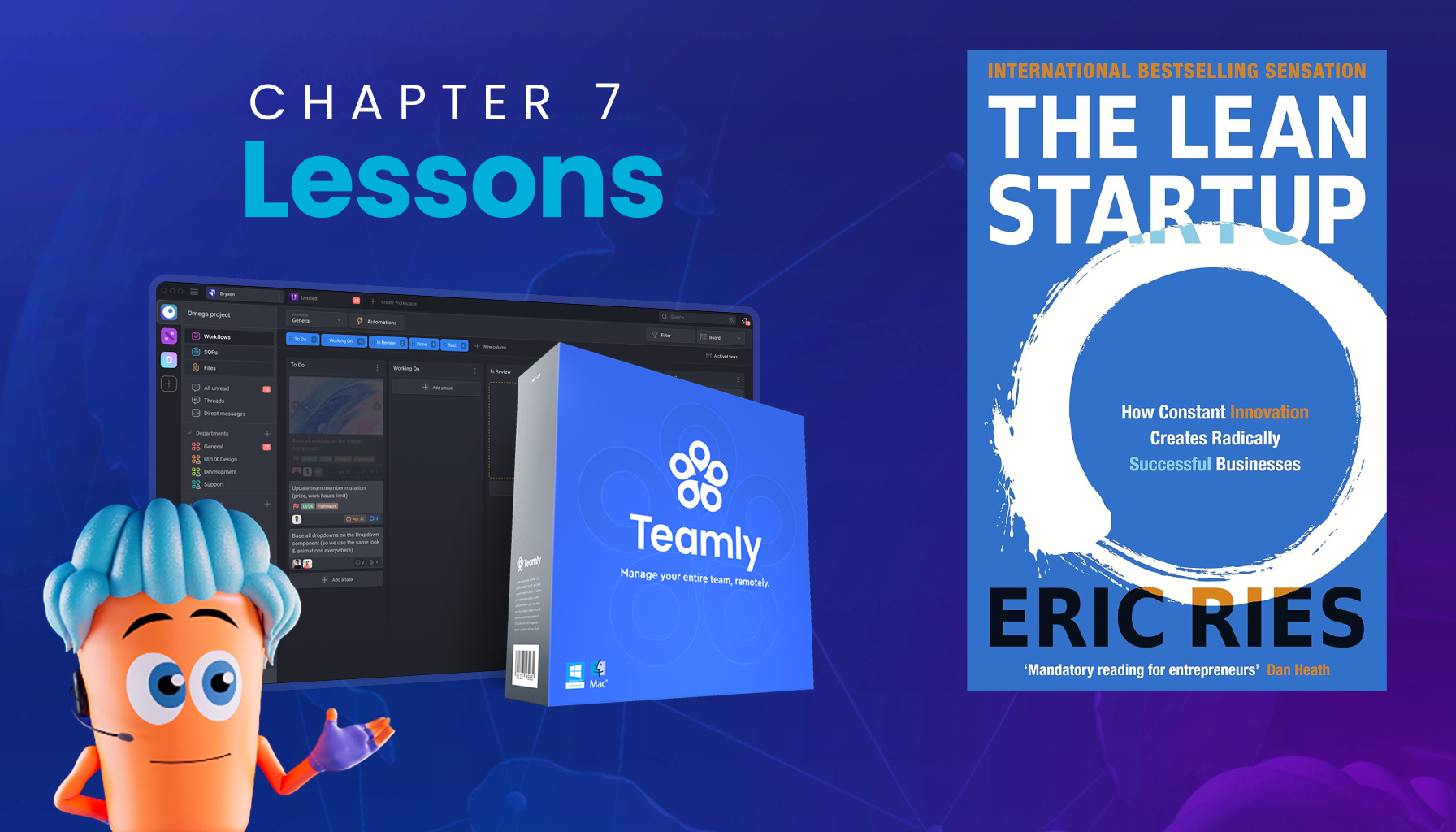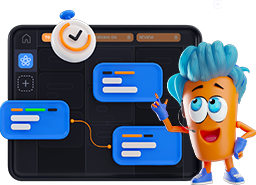
Click the button to start reading
Lessons from The Lean Startup By Eric Ries: Chapter 7
Startups live or die based on their ability to measure progress effectively. In Chapter 7 of Eric Ries’s groundbreaking book, The Lean Startup, readers are introduced to the vital concepts of innovation accounting, actionable metrics, and validated learning.
These tools allow entrepreneurs to make data-driven decisions and avoid the all-too-common traps of relying on vanity metrics.
This chapter is a game-changer for startups struggling to distinguish between real progress and misleading figures. The techniques discussed here provide a roadmap for systematically improving products and determining whether to pivot or persevere.
For modern startups, leveraging tools like Teamly alongside the methods in The Lean Startup can transform how teams collaborate and measure success.

The Trap of Vanity Metrics
Vanity metrics are the kind of data that look good on paper but offer little actionable value.
These include metrics like total website visits, gross revenue, or social media followers. While these numbers can create an illusion of success, they fail to address the deeper question of whether the product is meeting customer needs or driving long-term growth.
A classic example of the vanity metrics trap is celebrating a rise in user registrations without examining how many of those users become active customers.
The challenge lies in the deceptive nature of these metrics: they can boost morale but don’t help startups make informed decisions about their product or business model.
To escape this trap, startups must dig deeper into their data and focus on metrics that provide insights into customer engagement and retention.
This approach ensures that teams are solving real problems rather than chasing superficial wins.

Shifting Focus to Actionable Metrics
Actionable metrics provide clarity by establishing a direct cause-and-effect relationship between a specific action and its outcome.
Unlike vanity metrics, these data points help startups identify what works and what doesn’t, guiding them toward strategies that drive real results.
Eric Ries recommends two powerful tools to achieve this: cohort analysis and split-testing.
Cohort analysis breaks customers into groups based on shared characteristics or behaviors, allowing teams to track how different segments respond over time. Split-testing, also known as A/B testing, compares variations of a product or feature to determine which one performs better.
These methods eliminate guesswork and enable teams to optimize based on hard evidence.
For startups looking to refine their strategies, actionable metrics are the foundation of informed decision-making.
They reveal the effectiveness of marketing campaigns, product features, and even pricing models, ensuring that every step is backed by data.

The Role of Validated Learning
Validated learning is the process of testing assumptions about a product or business model through experimentation and measurement.
Instead of relying on intuition or guesswork, startups use real-world data to refine their ideas and ensure they’re building something customers actually want.
At the heart of validated learning is the Minimum Viable Product (MVP).
The MVP allows startups to launch a basic version of their product quickly, gather feedback from early adopters, and iterate based on what they learn. This iterative cycle—build, measure, learn—helps startups minimize waste and maximize efficiency.
For example, a startup might release a bare-bones version of an app to test whether users engage with its core feature.
If the engagement is low, the team can pivot to address the issue or scrap the idea altogether. This approach saves time and resources while providing invaluable insights into customer preferences.

Understanding Innovation Accounting
Traditional accounting methods don’t align well with the realities of startups, where success often depends on untested assumptions and rapid experimentation.
Innovation accounting bridges this gap by providing a framework for measuring progress based on learning milestones rather than financial metrics alone.
The process involves three key steps:
- Establish a Baseline: Use the MVP to collect initial data on customer behavior and interactions.
- Tune the Engine: Make iterative changes based on actionable metrics to optimize the product.
- Decide to Pivot or Persevere: Use the data to determine whether the current strategy is viable or if a pivot is necessary.
Innovation accounting keeps teams focused on what matters most: learning. By emphasizing progress over perfection, it ensures that startups remain adaptable and resilient in the face of uncertainty.

Knowing When to Pivot
One of the most difficult decisions a startup faces is knowing when to pivot.
A pivot is a fundamental change in strategy designed to test a new hypothesis about the product, business model, or engine of growth. Innovation accounting provides the data needed to make this decision with confidence.
Startups must evaluate whether their current strategy is yielding meaningful improvements in actionable metrics.
If not, it may be time to pivot. This doesn’t mean abandoning the vision; rather, it’s an opportunity to explore a new direction that could lead to greater success.
Ultimately, the decision to pivot or persevere should be based on validated learning. By testing assumptions and analyzing real-world data, startups can chart a path toward sustainable growth.
Unlock the full potential of your startup with the insights from Eric Ries’s The Lean Startup. This book is a must-read for entrepreneurs looking to innovate smarter and grow faster. Get your copy today on Amazon.
















